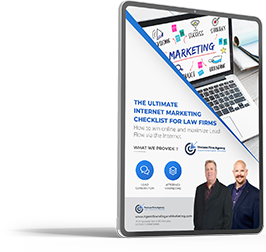Lead magnets are highly critical in your quest for digital marketing dominance and client acquisition. It’s just as the name suggests. You create little “magnets” of content that attract leads to your website and service offering.
A blog post, when created purposefully, can be considered lead magnets for insurance agents. But, there are numerous other ways in which to create a magnetic force around your insurance agency.
What are Lead Magnets?
Lead magnets are the things you offer in exchange for people’s email address or contact details. That may be in the form of helpful blog posts, informative eBooks, or lively videos.
The key to success with lead magnets is to make sure the content is super-valuable to your prospects. It should be useful enough to make them eagerly give up their email address in exchange for the information. Good lead magnets speak directly to individuals, as opposed to a general audience.
When someone reads the content, they should feel as if their precise issue is being addressed. The lead magnet should make the prospect gladly hand over their contact details in exchange for the chance to find out more.
Insurance Agents and Lead Magnets
Lead magnets can dramatically increase the speed at which lead generation is achieved. People are more likely to give you their contact details and some of their time if you give them something of value. The offer is not a form of coercion, but a genuine attempt to solve an issue in the life of your prospect.
If you offer someone an eBook, for example, you must deliver the information promised otherwise you might lose the trust of your prospect. A great strategy to adopt when creating lead magnets is to underpromise and overdeliver. Not delivering on your promises could cause the prospect to regret giving you their email and any future attempts to communicate with them would only compound their distaste.
{{cta(‘2a110d37-99f6-40f9-907a-1cf0176c5856′,’justifycenter’)}}
Examples of Lead Magnets:
There are many creative ways to design lead magnets, but the primary aim is to deliver something the prospect wants in exchange for their email address or other contact information.
Checklists: These are detailed step by step instructions that your prospect can follow to achieve a desired goal. You could, for example, create a checklist for making insurance claims online. The step-by-step format of this lead magnet would be especially helpful for people who are not particularly comfortable using technology.
Webinars: A webinar allows you to talk directly to your audience. Thus, it is more hands on than, say, a checklist. These interactive sessions are highly engaging, however. With webinars, people are naturally prepared to give you their email, telephone, or other contact detail in exchange for access to the webinar. One live webinar can benefit your agency well into the future, too, as the recording can also be used to capture leads.
Not sure what to create a webinar about? Look at the comment section of your blog, emails, and social media, to see what people are talking about. If you spot a problem that is a common theme, create a webinar that addresses the issues people are having.
Report or Whitepaper: A report or white paper provides means of giving detailed information about a particular product. They are particularly useful for big-ticket items where a person might need a lot more persuasion before committing to purchase. While not as effective as, perhaps, a webinar, whitepapers can be used to great effect in conjunction with other lead magnet types.
Guide: These are quite similar to the checklists. The difference here, however, is that you will provide a detailed explanation of each step. Guides help your prospect achieve a particular task such as “Buying Car Insurance,” or “Providing Health Insurance” for their employees.
You can even combine guides with a checklist to target people who are looking for a quick fix to their solution (checklist) and those that need more handholding through a process (guides).
Case Study: Case studies utilize testimonials and storytelling, which are two powerful marketing tactics. As a lead magnet, a case study is one of the top performers. Simply take a few examples of your most satisfied clients and tell their story of how your insurance agency had a positive impact on their lives.
Remember, the key is to give useful information that the prospect is looking for in exchange for their contact information. Lead magnets not only serve to deliver valuable information to prospects, but they also help build trust and allow you to establish a relationship with your audience. They are a great tool for developing long-term, loyal clients.
Delivering Your Lead Magnets
There are numerous tools you can utilize to ensure better promotion and smooth delivery of your lead magnets. Services such as Unbounce, or Leadpages allow you to easily create landing pages. Landing pages are special pages you create specifically to promote your offers.
Once you start gathering leads, you will need to maintain communication with them. One primary way of establishing that communication is via email, where you can keep your prospects up to date on all the latest offers and changes in the industry. There is no shortage of options for email marketing tools, but MailChimp, GetResponse, and ActiveCampaign are among the most popular.
If you haven’t established a solid lead magnet campaign, you could be missing out on some important opportunities to attract more clients. Start looking at ways you can begin implementing some of the strategies discussed here so that you can start maximizing your online marketing efforts.






